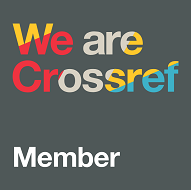Reconstruction Old Students Image Using The Autoencoder Method
Abstract
Full Text:
PDFReferences
M. Engelcke, O. P. Jones, and I. Posner, “Reconstruction bottlenecks in Object-Centric generative models,” arXiv preprint arXiv:2007.06245. 2020.
A. Dolmatova, M. Chukalina, and D. Nikolaev, “Accelerated FBP for computed tomography image reconstruction,” in 2020 IEEE International Conference on Image Processing (ICIP), IEEE, 2020, pp. 3030–3034.
J. H. Nam and A. Velten, “Super-resolution remote imaging using time encoded remote apertures,” Appl. Sci., vol. 10, no. 18, p. 6458, 2020.
N. Ailon, O. Leibovitch, and V. Nair, “Sparse linear networks with a fixed butterfly structure: theory and practice,” in Uncertainty in Artificial Intelligence, PMLR, 2021, pp. 1174–1184.
O. Wiles, S. Ehrhardt, and A. Zisserman, “Co-attention for conditioned image matching,” in Proceedings of the IEEE/CVF conference on computer vision and pattern recognition, 2021, pp. 15920–15929.
D. Minnen and S. Singh, “Channel-wise autoregressive entropy models for learned image compression,” in 2020 IEEE International Conference on Image Processing (ICIP), IEEE, 2020, pp. 3339–3343.
W. Lee, J. Lee, D. Kim, and B. Ham, “Learning with privileged information for efficient image super-resolution,” in Computer Vision–ECCV 2020: 16th European Conference, Glasgow, UK, August 23–28, 2020, Proceedings, Part XXIV 16, Springer, 2020, pp. 465–482.
J. Tang, C. Huang, J. Liu, and H. Zhu, “Image super-resolution based on CNN using multilabel gene expression programming,” Appl. Sci., vol. 10, no. 3, p. 854, 2020.
M. G. Hu, J. F. Wang, and Y. Ge, “Super-resolution reconstruction of remote sensing images using multifractal analysis,” Sensors, vol. 9, no. 11, pp. 8669–8683, 2009.
Y. Zhang, W. Miao, Z. Lin, H. Gao, and S. Shi, “Millimeter-wave InSAR image reconstruction approach by total variation regularized matrix completion,” Remote Sens., vol. 10, no. 7, p. 1053, 2018.
S. Indolia, A. K. Goswami, S. P. Mishra, and P. Asopa, “Conceptual understanding of convolutional neural network-a deep learning approach,” Procedia Comput. Sci., vol. 132, pp. 679–688, 2018.
T. Sun, W. Fang, W. Chen, Y. Yao, F. Bi, and B. Wu, “High-resolution image inpainting based on multi-scale neural network,” Electronics, vol. 8, no. 11, p. 1370, 2019.
DOI: http://dx.doi.org/10.17977/um010v6i22023p1-5
Refbacks
- There are currently no refbacks.
 | Letters in Information Technology Education (LITE) |

1.png)
1.png)
4.png)
1.png)
.png)
.png)

3.png)
1.png)
1.png)

3.jpg)